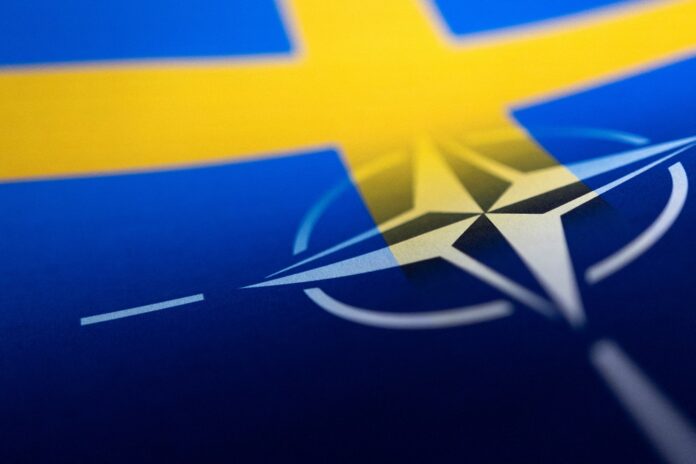Swedish and Nato flags are seen printed on paper this illustration taken April 13, 2022. – Reuters pic
BRUSSELS, May 10 — Finland and Sweden are weighing membership bids for US-led military alliance Nato after Russia’s invasion of Ukraine upended decades of careful non-alignment.
The Nordic neighbours are already close partners of Nato and alliance chief Jens Stoltenberg has pledged they would be quickly welcomed with “open arms”.
Here are the steps they’d need to go through to become full members:
First move and ‘marriage vows’
If and when they decide they want to join, the governments in Helsinki and Stockholm will write letters to Nato formally requesting to be let in.
The alliance’s 30 current members will then discuss the applications at a meeting of Nato’s main decision-making body, the North Atlantic Council.
This would typically consist of the ambassadors permanently at alliance headquarters in Brussels, but can include senior envoys from national capitals, such as a foreign ministers.
At that meeting the allies would decide if they wanted to move on to the next stage and convene talks with the aspirants.
Those accession talks — informally known as the “marriage vows” — check that the countries agree to the obligations involved in being a Nato member.
That includes the alliance’s collective defence commitment and cost sharing worked out according to the size of their economies.
The talks in Brussels are heavily prepared in advance and usually only last a day in total.
In the cases of Finland and Sweden there are not expected to be any hurdles as both are long-standing EU democracies that have cooperated and exercised with Nato forces for years.
Provided the country applying accepts all the commitments demanded by Nato, its foreign minister needs to agree in writing.
Nato also draws up a report and submits that to the 30 allies for them to make a call on whether to sign the “accession protocol”.
From start to finish, a Nato official estimated that for Finland and Sweden this first part of the process could take just “a couple of weeks” to complete.
It requires another meeting of the North Atlantic Council to give the final go-ahead and this could take place at the summit of Nato leaders in Madrid at the end of June.
Ratification by 30 allies
The next stage would then be expected to take longer as the process moves to the national capitals of the 30 Nato members for lawmakers to ratify the decision.
This process varies from ally to ally.
In the United States it requires a two-thirds majority to pass the required legislation in the Senate, whereas in Britain no formal parliamentary vote is required.
A Nato official said that there were “strong indications” from all existing members that they backed the membership bids from Helsinki and Stockholm and no surprises were expected from legislators.
Typically this ratification process by all the Nato allies has recently taken between eight and 12 months.
For North Macedonia — the last country to join Nato — the ratification process took around a year before they finally joined in 2020.
Allies may look to speed up the parliamentary approvals for Finland and Sweden given the tense international backdrop.
Once the legislative ratification by all Nato members is completed the aspirants are invited to accede to the Nato founding treaty.
They have to hand over the formal documents to the US State Department — the depository of the treaty — and then they are full members.
Security guarantees
One major concern for Finland and Sweden is what security guarantees there will be during the wait, as Nato’s Article 5 mutual defence agreement will only apply after full ratification.
Moscow has already warned against attempts by the two countries to join and there are fears the Kremlin could try to take advantage of the limbo period.
Nato chief Stoltenberg has said he is “certain that we will be able to find arrangements” to help protect the two invitees.
The United States and Britain have reportedly offered reassurances to the pair over the interim and the two countries already benefit from the EU’s mutual assistance provision. — AFP



